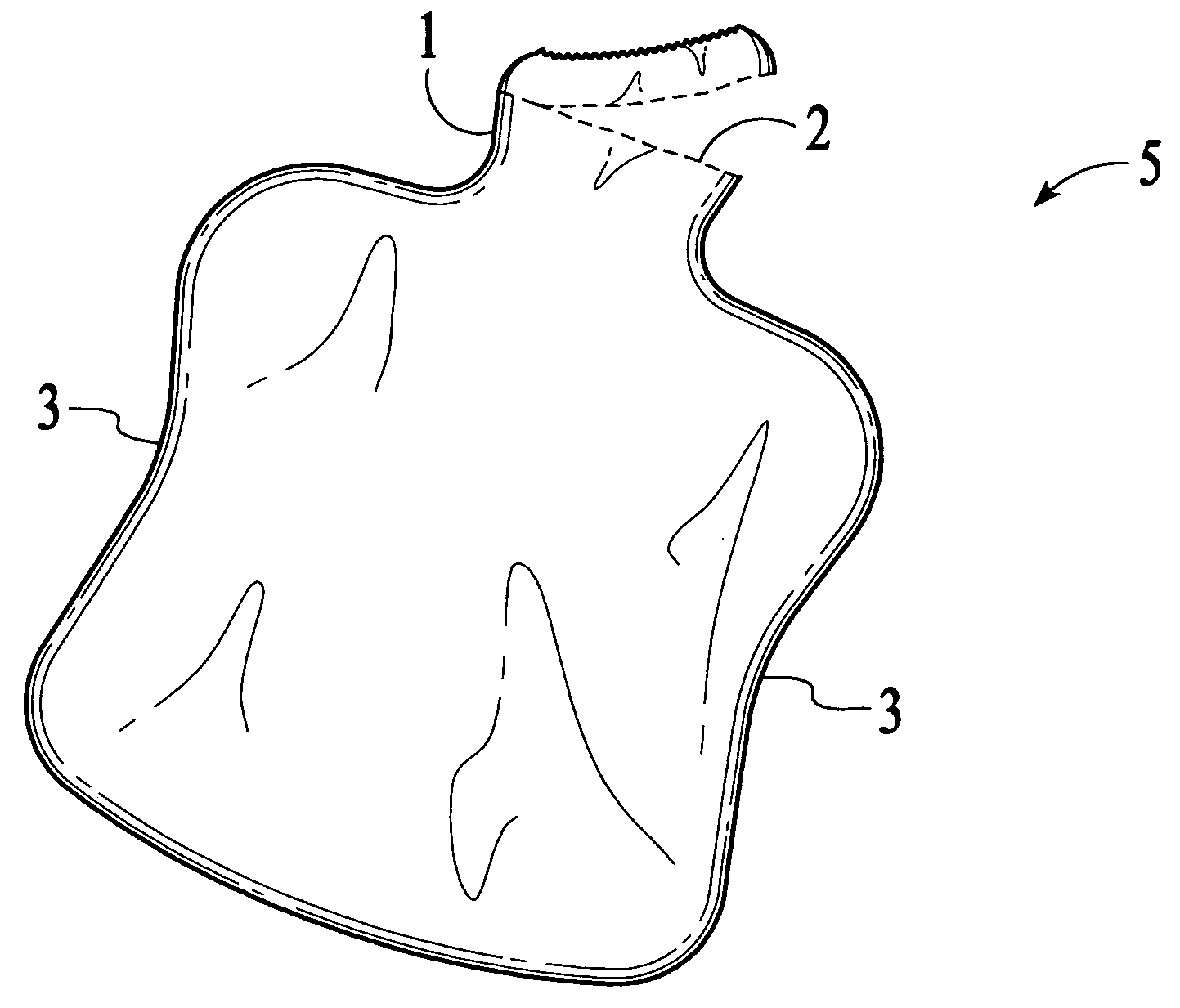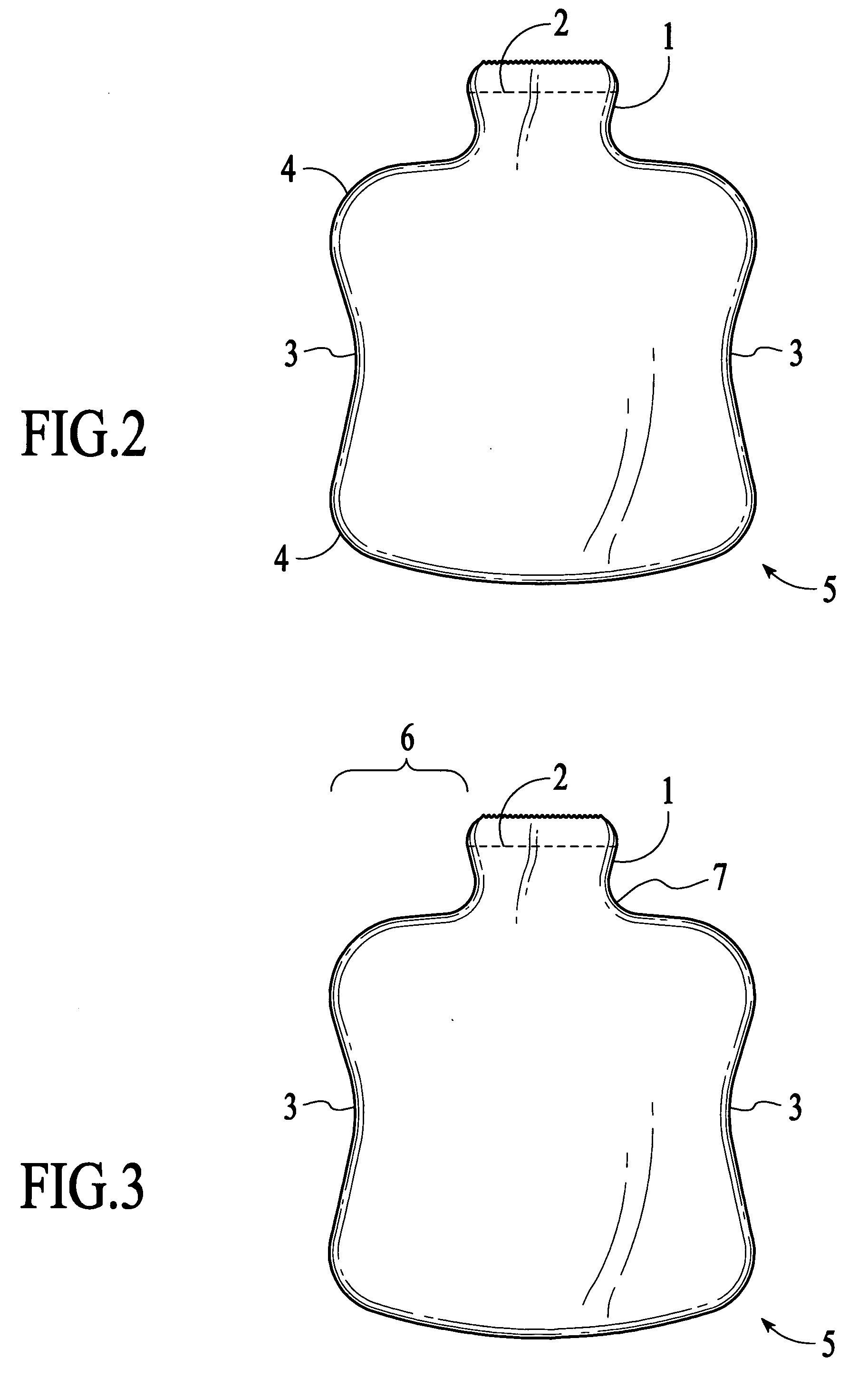Disposable food packaging
a food packaging and disposable technology, applied in the direction of flexible container closure, transportation and packaging, sacks, etc., can solve the problems of product leakage, a large amount of product, and the packaging is relatively difficult to quickly insert into a crowded purse, diaper bag, backpack, etc., to minimize the risk of scratching a child, facilitate handling and use, and facilitate the effect of transportability
- Summary
- Abstract
- Description
- Claims
- Application Information
AI Technical Summary
Benefits of technology
Problems solved by technology
Method used
Image
Examples
Embodiment Construction
[0016]The packaging, as illustrated generally by FIG. 1, comprises an opposed first plastic layer and a second plastic layer sealed to define a package body 5 comprising an upper wall 6, a lower wall 4, and two sides 3. From package body 5, a neck 1 emanates from said upper wall 6 at bend 7. Neck 1 represents an opening from which flowable food contents substantially contained within said package body 5 may be extruded, compressed, or naturally flow from the interior of package body 5. The corners transitioning between upper wall 6, lower wall 4, sides 3, and neck 1 are rounded. Neck 1 is openably sealed, thereby completely sealing said opposed first and second plastic layers of said neck 1 when the package is in the closed state. The opposed plastic layers of neck 1 further include a tear strip 2 so that removal of at least a portion of said strip allows opening of the sealed neck permitting flowable food contents within said packaging to flow therefrom.
[0017]Referring again descri...
PUM
| Property | Measurement | Unit |
|---|---|---|
| density | aaaaa | aaaaa |
| resilient | aaaaa | aaaaa |
| physical forces | aaaaa | aaaaa |
Abstract
Description
Claims
Application Information
 Login to View More
Login to View More - R&D
- Intellectual Property
- Life Sciences
- Materials
- Tech Scout
- Unparalleled Data Quality
- Higher Quality Content
- 60% Fewer Hallucinations
Browse by: Latest US Patents, China's latest patents, Technical Efficacy Thesaurus, Application Domain, Technology Topic, Popular Technical Reports.
© 2025 PatSnap. All rights reserved.Legal|Privacy policy|Modern Slavery Act Transparency Statement|Sitemap|About US| Contact US: help@patsnap.com



